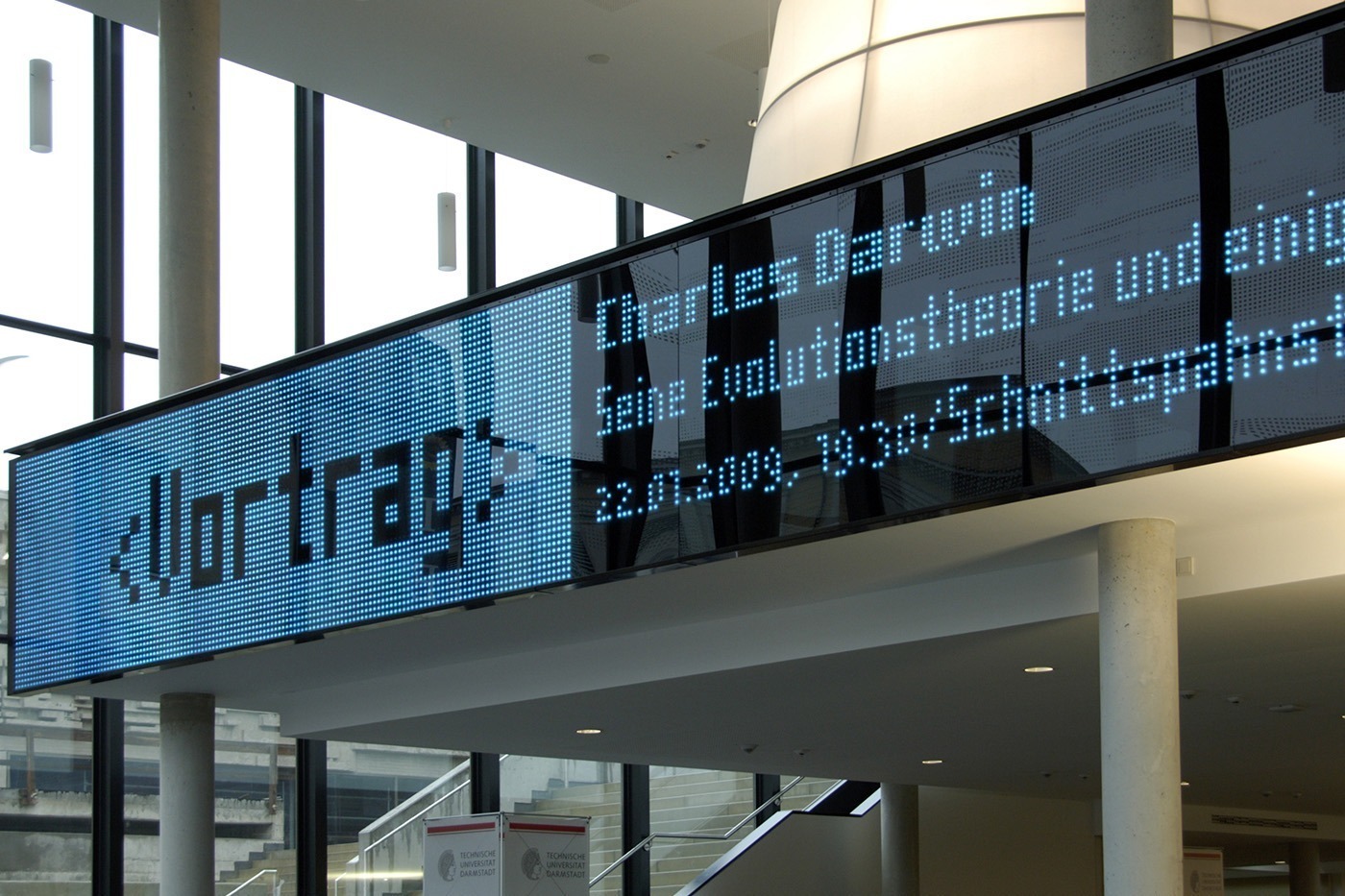
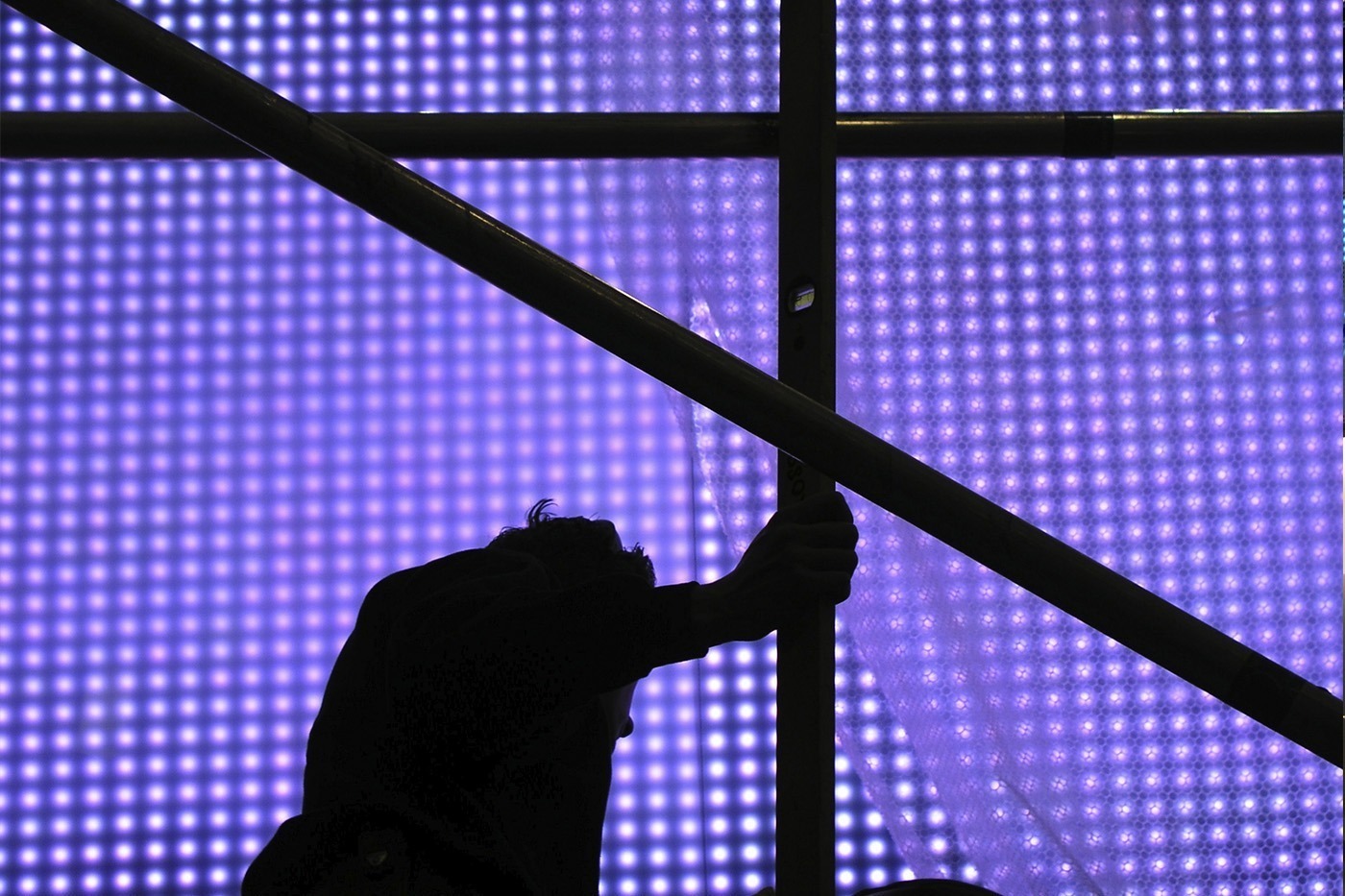

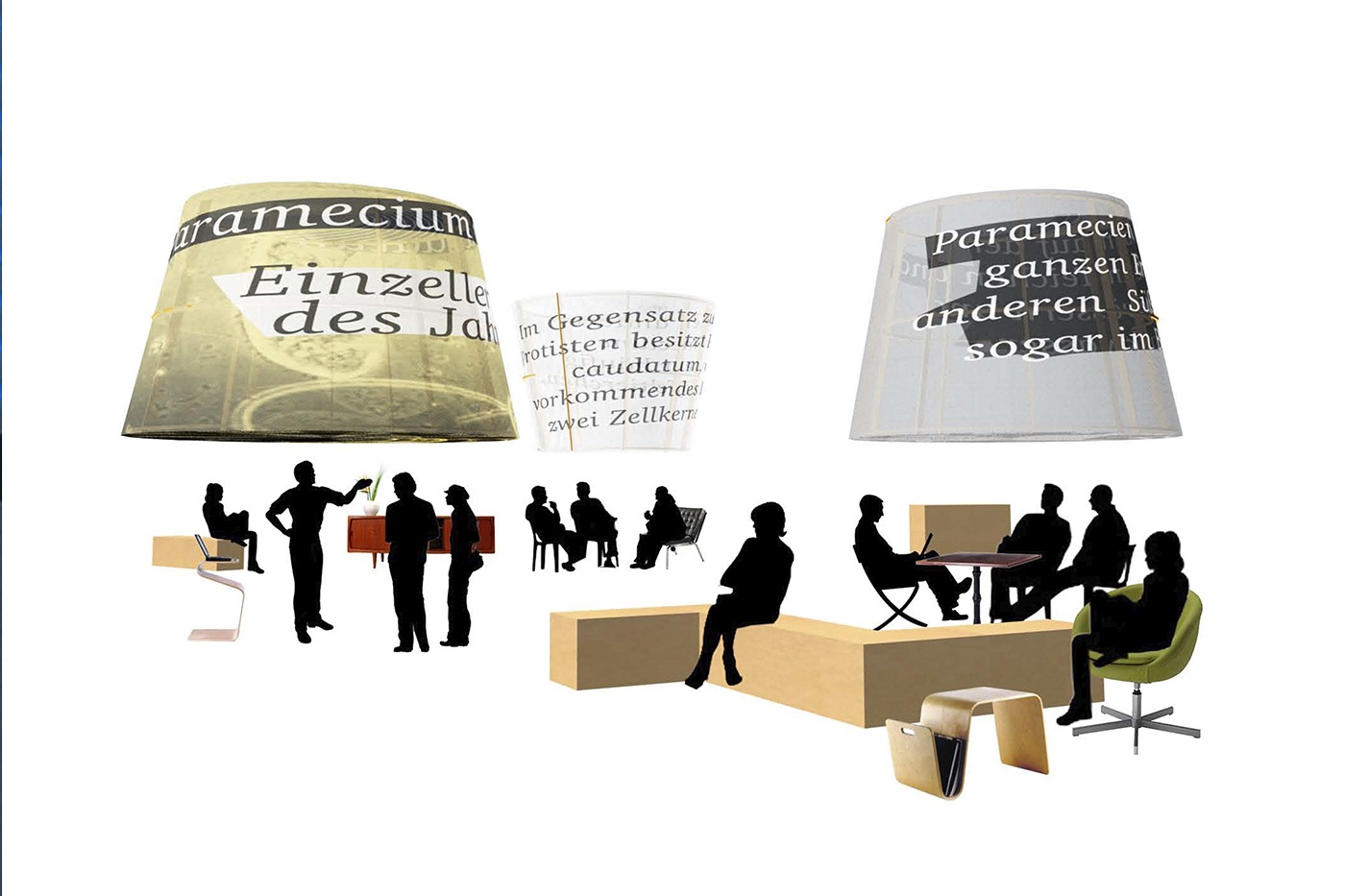
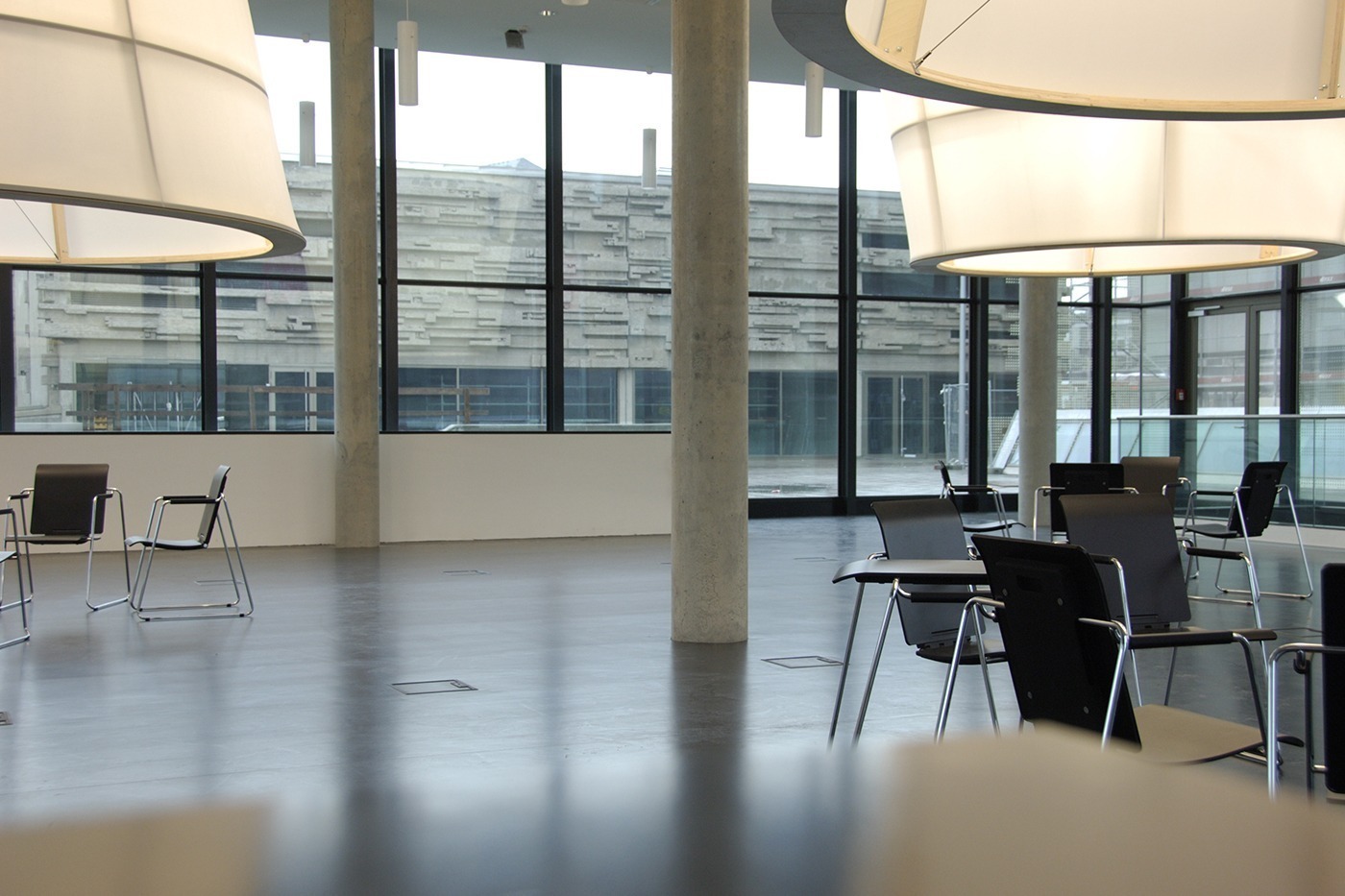
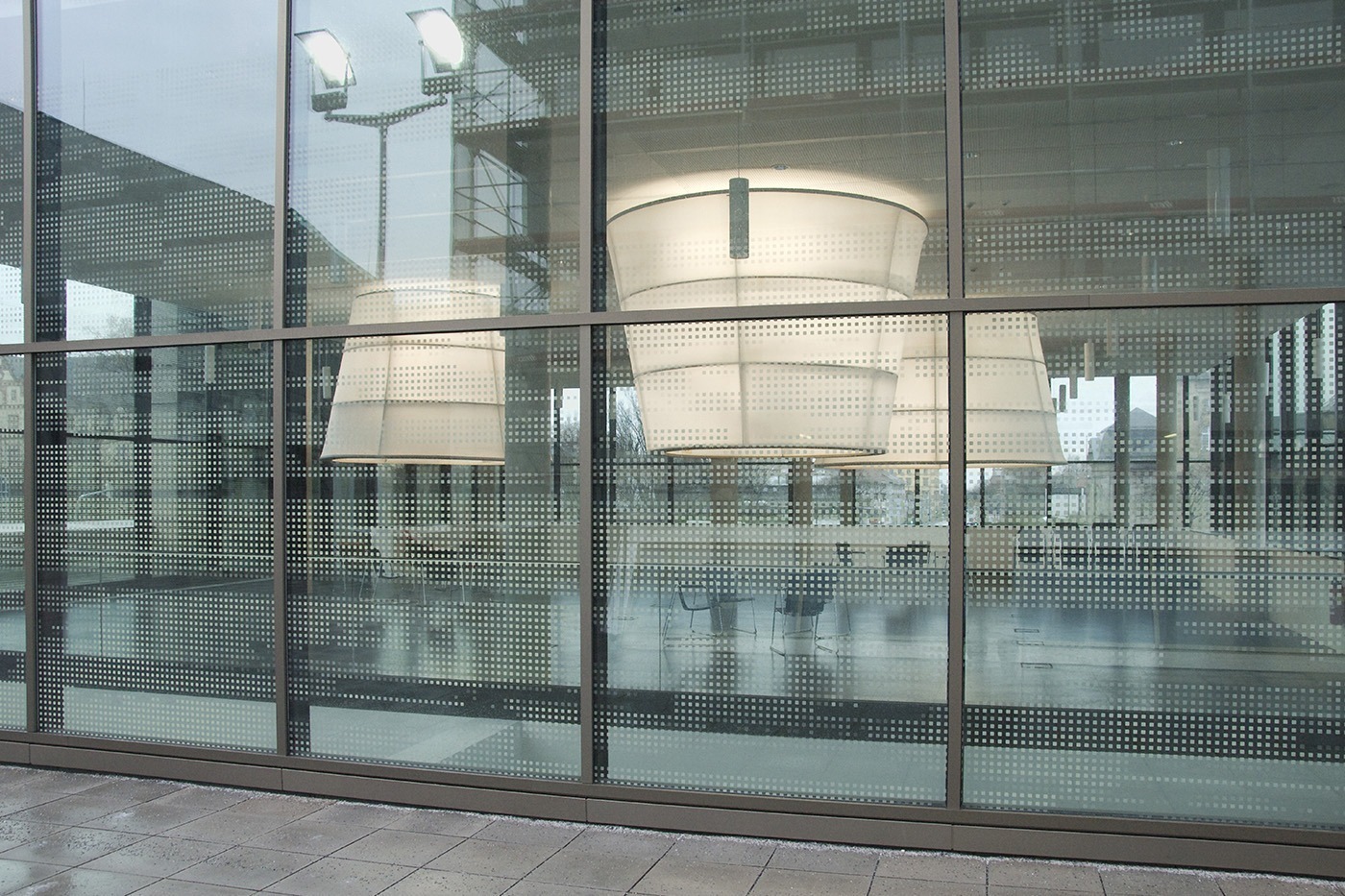
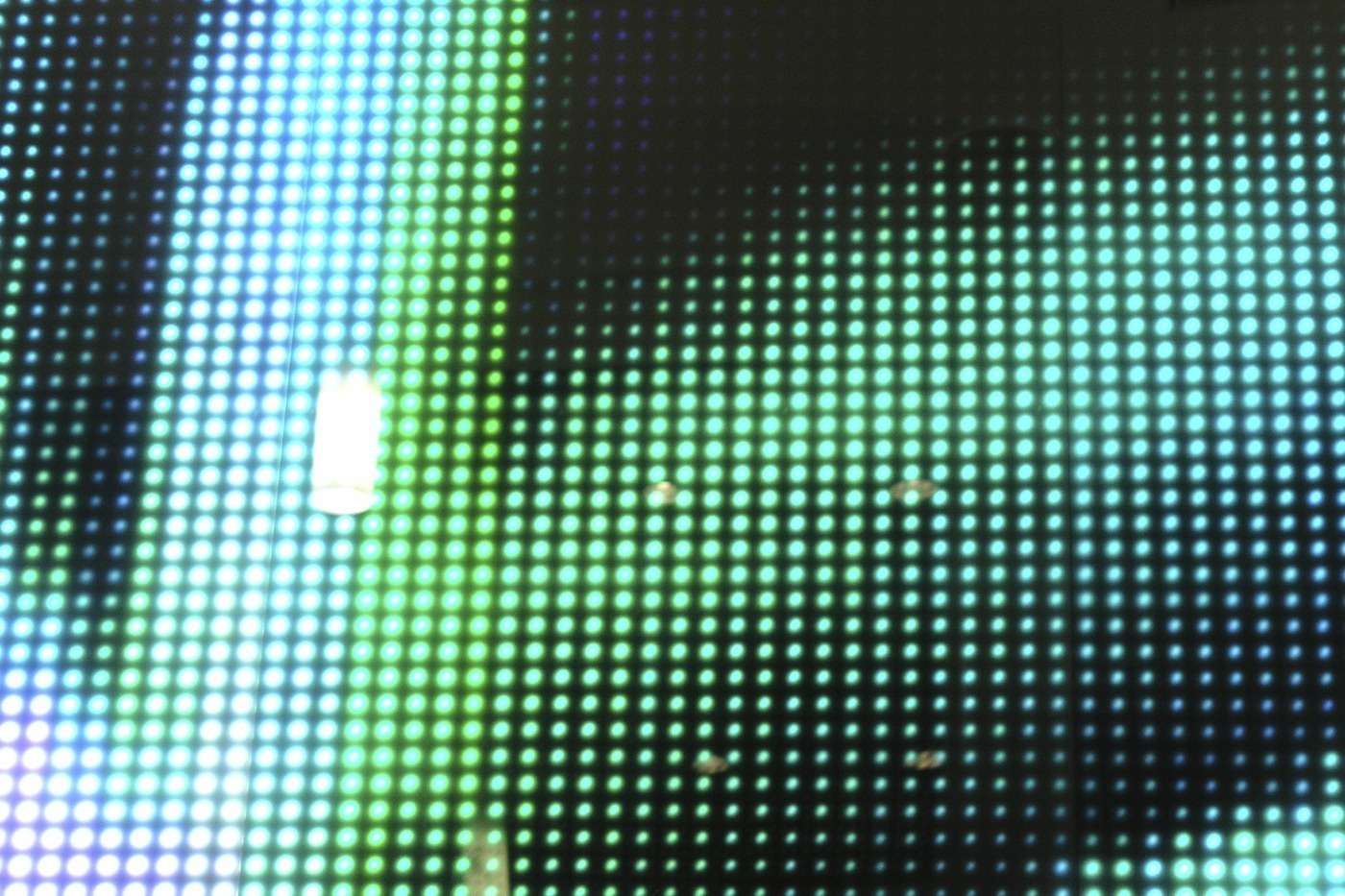
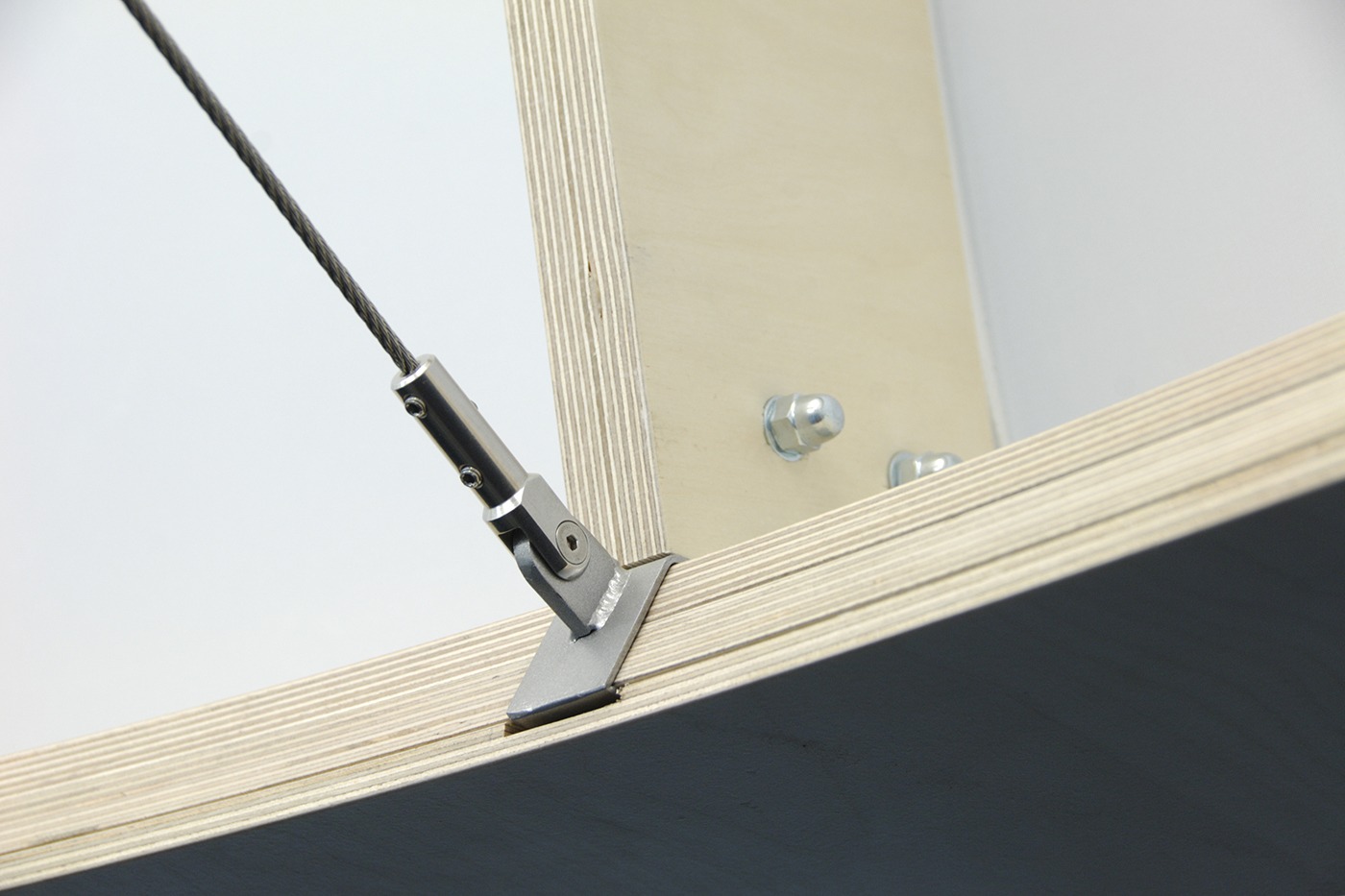
| Location | TU Darmstadt |
| Year | 2010 |
| Client | TU Darmstadt |
| Partner | Fuenfwerken Design AG |
| Photos | Martin Schmitt & Fuenfwerken Design AG |
When the new entrance building to the TU Darmstadt, a two-storey glass cube with a projecting roof, was almost finished, it became clear that no thought had been given to what was actually going to happen inside. This is where we came in: the building is intended to be the calling card and communicative center of a university that is scattered across the city. But such a building must also be made to speak. Interior design is a good way to do this. The central entrance building at Karolinenplatz 5 (“Karo 5”) is intended to give TU Darmstadt a face. It is no coincidence that the project was not initiated by the construction department, but by the TU’s communications department.
We intervened at three points within the new building: 1. an LED display in the foyer allows the building to play its role as the mouthpiece of the TU. 2. a history exhibition conveys historical identity and engineering know-how: we cast a concrete interface that floats on steel cables. This is the display for the exhibition. 3. the large, bright space on the upper floor was structured in such a way that it is open for many uses, but also develops into a functioning social space beyond “events”.
Two ideas were important for the LED display: firstly, it should be part of the architecture – and not an applied technoid wall decoration. To make the display an integral part of the building, we placed it in the place of the parapet of the spatially recessed upper floor. Secondly, we didn’t want an obtrusive media façade that would overload the public space with images and signs – no Times Square in Darmstadt. The display is therefore not mounted on the outside of the façade, but is part of the interior. The information texts on it are very strict in terms of typography and design – there is only one font.
On the upper floor, we had to structure a large square space that is transparent on all sides and define its use. The design should open up possibilities, not restrict them. The room is always used in different ways – sometimes for lectures, sometimes for exhibitions, sometimes as a place for students to get together. In this respect, it did not make sense to structure it with fixed installations or furniture. Instead, we built three large illuminated objects and hung them from the ceiling. They give the room a warm atmosphere, have an expansive presence and give the room a structure.

